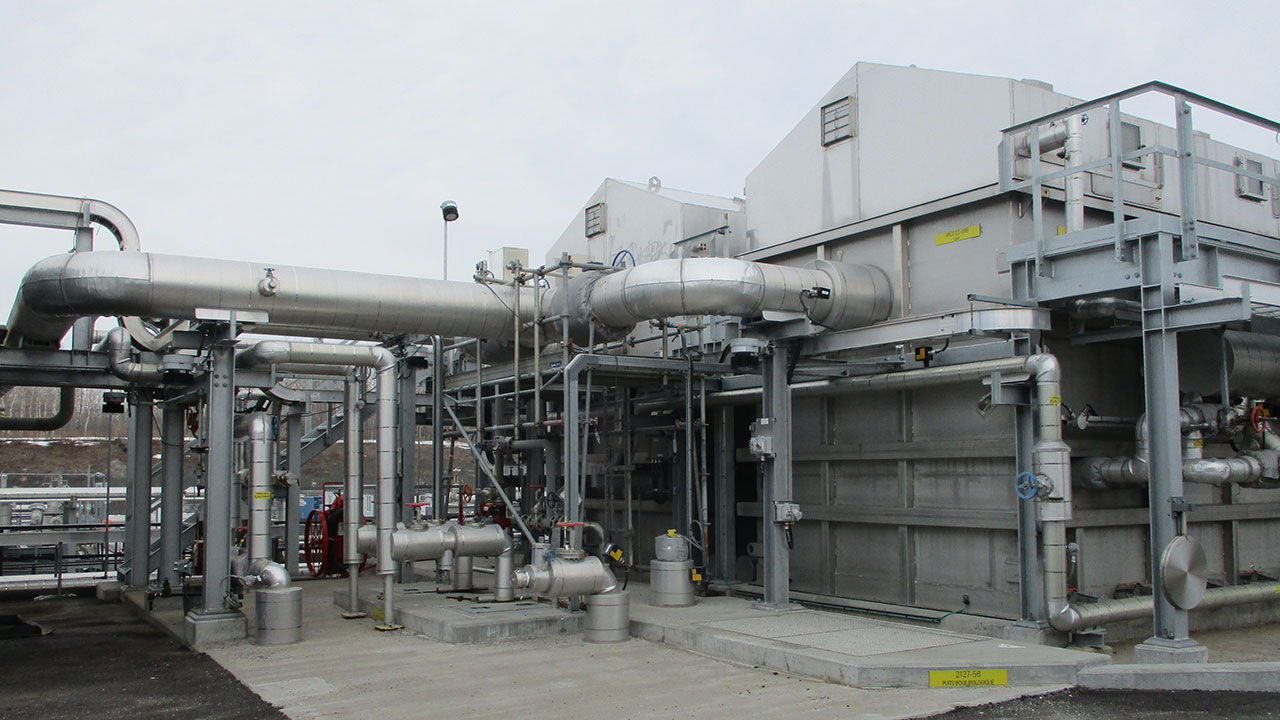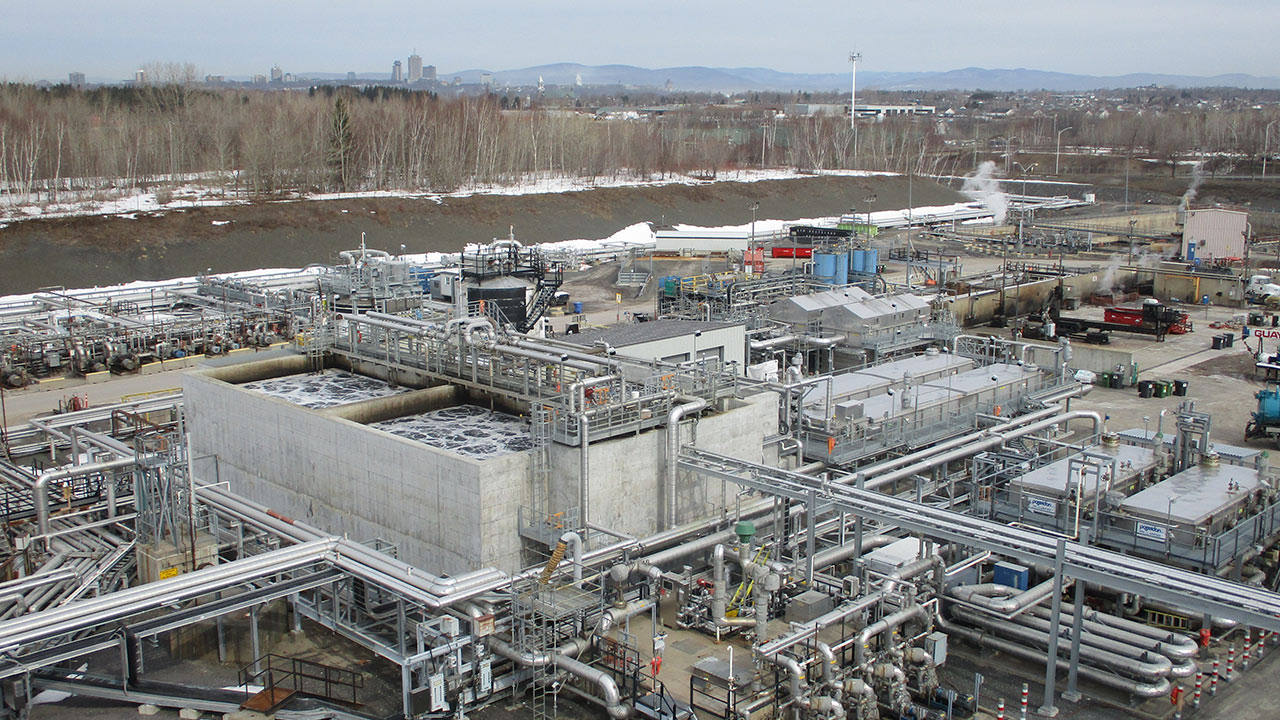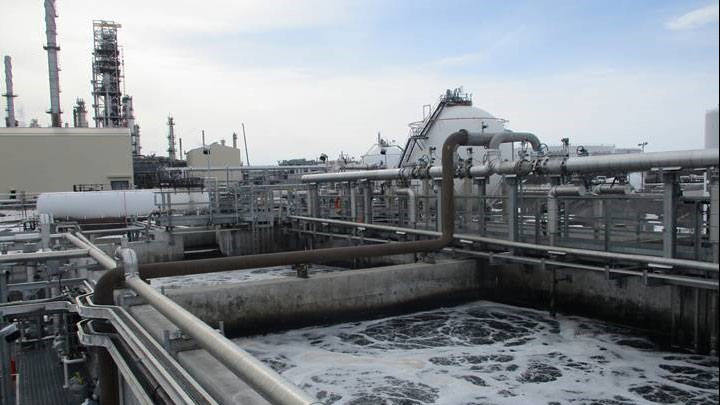
Tetra Tech provided design, engineering, start-up, and operation services to modernize and optimize the wastewater treatment plant (WWTP) at Valero Energy’s Jean-Gaulin Refinery in Quebec City, Quebec.
The WWTP upgrade aimed to increase nitrification capacity to minimize free ammonia discharge. Valero Energy previously had determined that an attached growth biological treatment process in tanks would be a better solution than their existing suspended growth system in basins. Tetra Tech completed the design and operated the pilot plant for nine months to optimize nitrification and chemical dosing through analysis of the pilot reactor and effluent, establishing parameters to scale up the pilot plant to a full-scale treatment plant.
Benefits
- Design and operation of a pilot plant
- 3D scanning to optimize site layout
- Process control to prevent effluent toxicity to rainbow trout
- Complete redundancy to facilitate maintenance activities and environmental protection
The new wastewater treatment plant design includes:
- Two American Petroleum Institute separators for optimum oil separation
- A two-train moving bed biofilm reactor with two processing stages
- Two dissolved air flotation biological sludge separators
The design offers complete redundancy of the process to facilitate maintenance activities without impacting production or the environment. Tetra Tech performed a 3D scan to facilitate optimization of the site.
Two months after the September 2019 startup, the wastewater treatment system was receiving full flow from the refinery and achieving near complete, stable nitrification. Discharge of treated wastewater directly to the St. Lawrence River began in May 2020, and although the previous system was fully compliant, the new one has demonstrated significantly improved results including 75 percent reduction of ammoniacal nitrogen.

